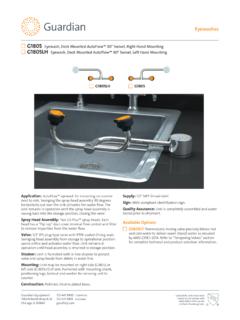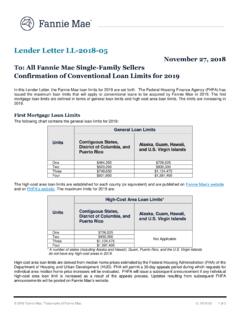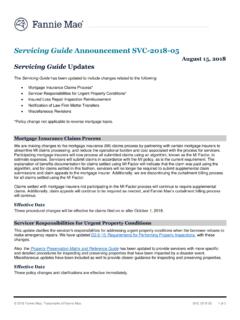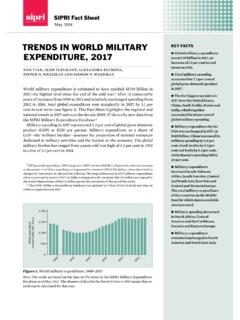Transcription of ACERBI The Austrian Imperial Army 1805-09
1 Enrico ACERBI The Austrian Imperial -Royal army 1805-1809. Placed on the Napoleon Series: February-September 2010. Oberoesterreicher Regimente: IR 3 - IR 4 - IR 14 - IR 45 - IR 49 - IR 59 - Garnison - Inner Oesterreicher Regiment IR 43. Inner Oersterreicher Regiment IR 13 - IR 16 - IR 26 - IR 27 - IR 43. Mahren un Schlesische Regiment IR 1 - IR 7 - IR 8 - IR 10. Mahren und Schlesischge Regiment IR 12 - IR 15 - IR 20 - IR 22. Mahren und Schlesische Regiment IR 29 - IR 40 - IR 56 - IR 57. Galician Regiments IR 9 - IR 23 - IR 24 - IR 30. Galician Regiments IR 38 - IR 41 - IR 44 - IR 46. Galician Regiments IR 50 - IR 55 - IR 58 - IR 63. Bohmisches IR 11 - IR 54 - IR 21 - IR 28. Bohmisches IR 17 - IR 18 - IR 36 - IR 42.
2 Bohmisches IR 35 - IR 25 - IR 47. Austrian Cavalry - Cuirassiers in 1809. Dragoner - Chevauxl gers 1809. Stabs-Dragoner abteilungen, 1-5 DR, 1-6 Chevauxl gers Vienna Buergerkorps The Austrian Imperial -Royal army (Kaiserliche-K nigliche Heer) 1805 1809: Introduction By Enrico ACERBI The following table explains why the year 1809 (Anno Neun in Austria) was chosen in order to present one of the most powerful armies of the Napoleonic Era. In that disgraceful year (for Austria) the Habsburg Empire launched a campaign with the greatest military contingent, of about men. This powerful army , however, was stopped by one of the more brilliant and hazardous campaign of Napol on, was battered and weakened till the following years.
3 Year Emperor Event Contingent (men). 1650 Thirty Years War 150000. 1673 60000. Leopold I. 1690 97000. 1706 Joseph I Erzherzog Eugen 130000. 1735 Carl III 150000. Seven Years War 200000. Maria Theresia 1777 244000. 1788 Turks War 364000. 1792 Joseph II Peacetime 290000. 1792-1796 Revolutionary Wars 314000-500000. 1800 495000. 1802 462000. 1803 310000. 1804 355000. 1806 Franz I 345000. 1808 390000. 1809 630000 [1]. 1810 290000. 1811 233000. Source: Neue Statistisch-Geographische Beschreibung des K nigreichs Ungarn, Croatien, Slavonien und der ungarischen Milit r Grenze, Weygand, Leipzig 1832. The Austrian Military Reforms Evolution of the Infantry Units 1802-1816 (source Wrede) [2]. German Hungarian # Regiment Regiments Regiments Grenadier Grenadier Regiment Date Stand Bat.
4 Companies Total companies Companies Companies companies Staff Each Companies Reserve Reserve Line Line Depot Depot 4. 1802 Peace 3 6 20 167 207 142 46. 2 companies 1805. War 3 6 24 192 233 212 212 143 53. 1805 Peace 4 4 20 120 129 129 46. 4*. 1806 War 5 4 24 201 215 201 212 201 51. 1807 Peace 2 6 18 186 4 206 4 136 70. 2. 1809 War 3 6 20 198 companies 219 companies 145 75. 1809 Peace 20 186 440 206 136 70. 3 6 2. 1816 War 30 (22) ** 218 208 238 ** 145 75. * independent battalions - ** included two Landwehr battalions (only for Erbl nder or Imperial hereditary provinces) each with 6 companies - ** Hungarian Reserve Depot (one division) had two companies (440 men in peace and 208 in war). Authorized Strength Numbers for Regiments German Hungarian Regiments Regiments Grenadier Landwehr Grenzer Date Stand notes Battalions Battalions Battalions line line 1802 Peace 3348 4068 852 -- 1242.
5 1805 War 4838 5198 858 -- 1272. 1805 Peace 2884 2884 516 * -- 774. 1806 War 4163 4163 804 * -- 1206. Peace 3318 3638 816 -- 1236 After 1809. regiment's 1807. Artillery (service 1809 War 4053 4401 870 -- 1314 or bedienung of 97 men) was lost Peace 3318 3638 816 -- 1236 Hungarian line 1809 regiments. Had 1816 War 5160 5063 870 1308 1428 one Reserve division as Depot * With 4 companies each two veteran, old or Alt-Grenadiere companies (with the fur cap) - two young or Jung Grenadiere companies (with shako). The nominal number of the Gemeinen (common troopers) of a company was 160. After the 1809. disaster the numbers of the soldiers went down to 60 in the German regiments and 100 in the Hungarian regiments. The nominal number of the grenadiers of a company was 120 in the German regiments and 150-160.
6 In the Hungarian regiments These numbers was not always rigid. In Octobere 1805, for example, in Italy the Austrian army was noticeably reinforced. There, the Infantry regiments had 4 fusiliers battalions plus one Grenadier's battalion, which remained by its regiment. Two Infantry regiments formed a brigade. On October 18, 1805, as regular order of battle, every Infantry brigade had a 3 pdr battery (no artillery for cavalry brigades). The regiments moved with their own artillery and, for this, was formed a special support reserve of 180 2-horse drawn carriages (Karren) and 33 4-horse drawn ammunition wagons (Leiterwagen). The artillery park was, as in the previous campaigns, at Palmanova in Friuli. Austrian army 1807-1812 Schemes[3].
7 After 1800 and the first army reorganization, the Austrian army or sterreichisches Heer improved its organization with a new recruiting system and the widening of the duty services, created new units and enlarged the Hungarian troops (probably either for having lost a large amount of crown lands, either under the direct French threats). As said, the great test for this new army completely failed in 1809. At the end of 1807 the forces ( Stande ) of the Austrian army was the following: Infantry: 63 Line Infantry regiments -- 1 J ger Infantry regiment -- 17 National-Grenzregimenter or Military Border regiments. Cavalry: 8 Cuirassier regiments -- 6 Dragoon regiments -- 6 Chevaul gers regiments -- 12 Hussars regiments -- 3 Uhlans regiments Artillery: 4 Feldartillerie regiments.
8 Staff: (see the following dictionary of army ranks for details upon Austrian names). Engineers: (Geniedirektor or Engineers commander: Archduke John). Engineers Corps or Ingenieur Korps: 4 FML, 5 GM, 6 colonels, 8 , 12 majors, 64. captains, 47 lieutenants Miners or Mineur Korps: 1 Colonel, 1 , 1 major, 4 captains, 4 lieutenants, 4 Second lieutenant, 1 adjutant, 4 companies of 100 men. Generalquartiermeister Staff: (GM Mayer), 4 colonels, 6 lieutenant colonels, 14 majors, 23. captains, 13 lieutenants scattered in the territory, fortresses, major cities, the military border, and sometimes named when needed. Pontooners (Battalion Czaikisten): 1 colonel, 5 captains, 6 lieutenants, 6 second lieutenant, 11. Oberbr ckenmeister (a kind of sergeant major), 6 companies each with 100 men.
9 Military Train (Milit rfuhrwesens Korps): 1 colonel, 1 lieutenant colonel, 1 major, 6 Premier- rittmeister (first captain), 9 second-rittmeister (2nd captain), 26 lieutenants, 34 second lieutenant, 11. adjutanten scattered in the train (Fuhrwesens) divisions of the major cities. Remountierung-Besch lswesens (horse breeding and horse replacements providers): 2. colonels, 2 lieutenant colonels, 2 majors, 3 rittmeister (scattered among the stations of Mez hegy s, Meskowitz, Brandeis, Olm tz, Kolnitz, Vienna and Wels). Kriegskommissariat (War Commissioner): 22 Oberkriegskommiss re, 72 Feldkriegskommiss re, 74 Kriegskommissariat officers (scattered in countryland, provinces). Milit r- konomie-Commissionen and Depots (Commissioners for Military Economy and Depots): at Stockerau, Prague, Alt-Ofen (now Budapest), Br nn, Podgorze, Jaroslaw, Marburg, Karlsburg and Vienna (each with 1 Staff officer, 1 captain and 2 lieutenants).
10 Invalidenh user (Hospitals for Invalids): Vienna, Prague, Turnau, Pettau (each with a commander, a Staff officer, 1 Auditor, 1 Rechnungsf hrer, 1 adjutant, 1 arzt (surgeon), 1 kaplan (priest), 1 Kriegscommiss r). Military academies: Vienna (Engineers), Wiener-Neustadt (Cadets), Joseph-Akademie of Vienna (medical service), Thierarznei-und Thierspital-Institutof Vienna (veterinary). Military Police (Wiener Milit r-Polizeiwache): at Vienna. Mounted and foot gendarmes . (2. captains, 1 lieutenant and 1 second lieutenant, 1 adjutant and 300 policemen. Imperial Guard (Leibgarde). Adelige erste Arcieren Leibgarde Kapit n-leutnant (lieutenant- 1 Hauptmann (captain) 2. captains). 2 Oberlieutenant 1 Unterlieutenant 1 Premier-Wachtmeister 5 Second-Wachtmeister 3 Vize-Second Wachtmeister 60 Garden (guards).)

![arXiv:1805.03294v1 [cs.CL] 8 May 2018](/cache/preview/b/e/3/8/f/c/5/8/thumb-be38fc58c4a36b24000cab8676aeae33.jpg)




